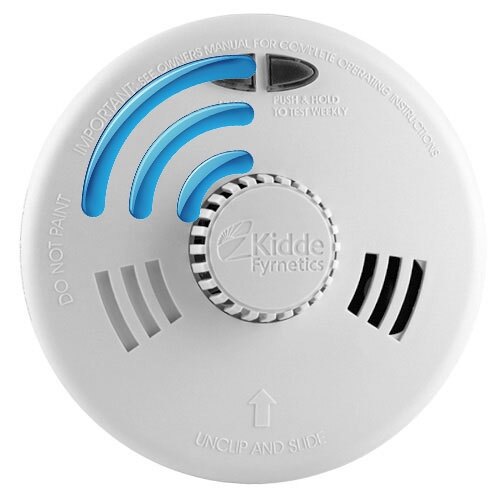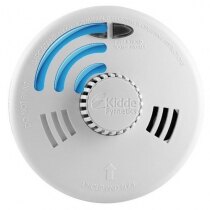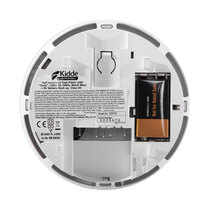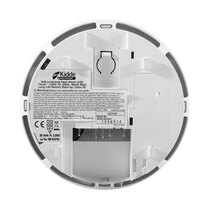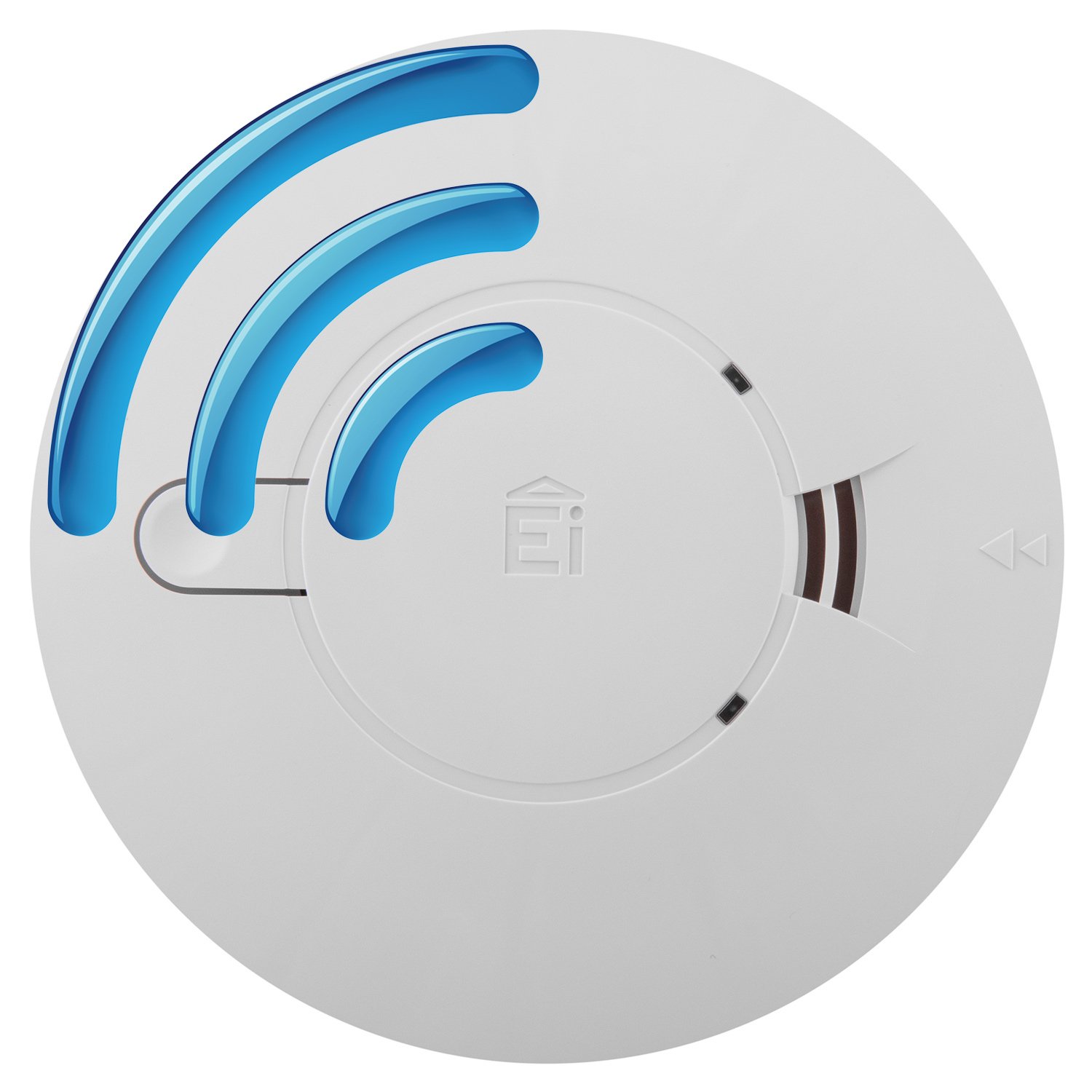-
Contact
Sales & Customer Service
0800 612 6537 support@safelincs.co.uk Live ChatDelivery Enquiries
0800 077 6149 - Resources
Fire & Safety Solutions
CALL OUR TEAM NOW 0800 612 6537
Lines open today 8am - 6pm
Quick Delivery
From £4.19 inc VAT
Live Chat - Online
Instant help & Advice
Trade Discounts
and exclusive pricing
0% Credit Available
Open an account now
5 Star Customer Feedback
Mains Radio-Interlinked Heat Alarm with Back-up Battery - Kidde Slick 3SFWRF
Discontinued Product
The Kidde Slick range has been discontinued and is no longer available for purchase. We recommend instead the Aico Ei140 series with the Ei168RC wireless base, though these will require an electrician to replace the wiring.
alternative product
Mains 230V Optical Smoke Alarm with Alkaline Back-up Battery - Ei146eRF
- Power: 230V mains powered with back-up battery
- Backup Battery: 9V alkaline back-up battery (included)
- Warranty: 5 year warranty
- Wirelessly interlinks with up to 12 compatible alarms
- Range: up to 30m within buildings
- Suitable for BS 5839-6: 2019 Grade D2
- Kitemarked to BS EN 14604: 2005
- Also suitable for both the Welsh and Scottish 2022 legislation
£105.91 inc VAT
£88.26 ex VAT
Product Overview
Interlink
Ancillary Products
Technical Data
FAQs (3)
The Kidde Slick 3SFWRF Heat alarm is a mains powered Radio-interlinked unit. Using RF technology, the alarms within the series "talk" to one another, creating an intelligent system that is quicker to sound in an emergency. Heat sensor alarms, such as the 3SFWRF unit, are suitable for installation in kitchens and garages and are effective at eliminating false alarms.
- Power: 230V mains powered with battery backup
- Backup: Optional alkaline or lithium backup battery versions
- Warranty: 6 year manufacturer's guarantee on standard alkaline unit
- Warranty: 10 year manufacturer's guarantee on 10 year lithium cell unit
- A maximum of 15 units can be interlinked through simple "house coding"
- Suitable for installations complying to BS 5839-6: 2019 Grade D1 (KE3SFLLWRF) or Grade D2 (KE3SFWRF)
- Kitemarked and CE marked
- Easy connection to wireless test and hush remote switch
- Neat slimline design
- LED display
- Test/Hush button
- Low battery warning chirp
- Supplied with fixings; 2 x screws and 2 x rawl plugs
- This alarm is also suitable for the updated 2022 Scottish legislation for fire alarms in homes
The table below shows all the units that can interlink with the KE3SFWRF and KE3SFLLWRF.
Compatible Alarms|
Model Number
|
Type of unit
|
Type of interlink
|
| KE1SFWRF | Ionisation Alarm with Alkaline Battery | Wireless interlink |
| KE1SFLLWRF | Ionisation Alarm with Lifetime Lithium Cell | Wireless interlink |
| KE2SFWRF | Optical Alarm with Alkaline Battery | Wireless interlink |
| KE2SFLLWRF | Optical Alarm with Lifetime Lithium Cell | Wireless interlink |
|
Model Number
|
Type of unit
|
Type of interlink
|
| KESRFRTH | Remote Control Test and Hush Switch | Wireless interlink |
| Product Code |
Standard Alkaline: KE3SFWRF Lifetime Lithium Cell: KE3SFLLWRF |
|---|---|
| Brand | Kidde |
| Back-Up Battery | KE3SFWRF: 9V Alkaline KE3SFLLWRF: Lifetime Lithium |
| Dimensions (HxDia) | 89x135mm |
| Operating Temperature | 0°C to +40°C |
| Relative Humidity | Up to 93% |
| Sound Output | 85dB |
| Warranty | KE3SFWRF: 6 Years KE3SFLLWRF: 10 Years |
| Weight | 0.49kg |
| Product Datasheets |
Q. How can we test the alarm to make sure it is working?
A.
The manufacturer's recommendation is to test the alarm by pressing the test button. This will simulate a heat input at the heat sensor. You can also test it with a hair dryer but make sure that the hairdryer is kept away at a suitable distance from the alarm. Do not attempt to test the alarm by using open fire or excessive heat as this may damage the unit.
Q. Are the KE1SFWRF, KE2SFWRF and KE3SFWRF units 'stand-alone' or do they require an additional base unit?
A.
Safelincs supplies RF bases with these products which enables radio interlinking between units, so they do not require any additional components.
Q. Please could you tell me how long it takes to charge up the battery on the Kidde radio interlinked bases?
A.
Hello, it takes 24 hours to fully charge the back up battery on the Kidde radio interlinked bases.
Approved Partner
Customer Reviews
1 customer has given this product an overall rating of 4 out of 5
Reviews by real customers
All of our product reviews are written by real customers that have purchased this product from us and are published without modification.Rating: 4 / 5 Stars
Reviewed by:
Easy installation, did need friend to help with linkup.
Published on: 20th September 2019
Looking for more information?
If you have any questions or would like more information about this product you can ask one of our specialists.
Live Chat Available Now
Direct Telephone
01507 464181




















